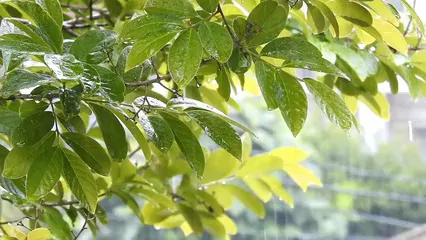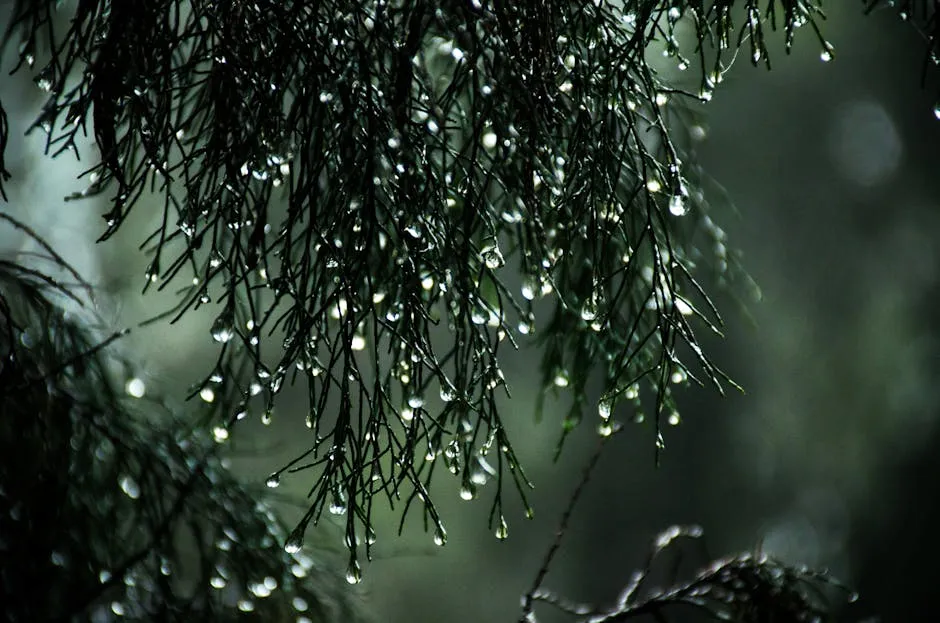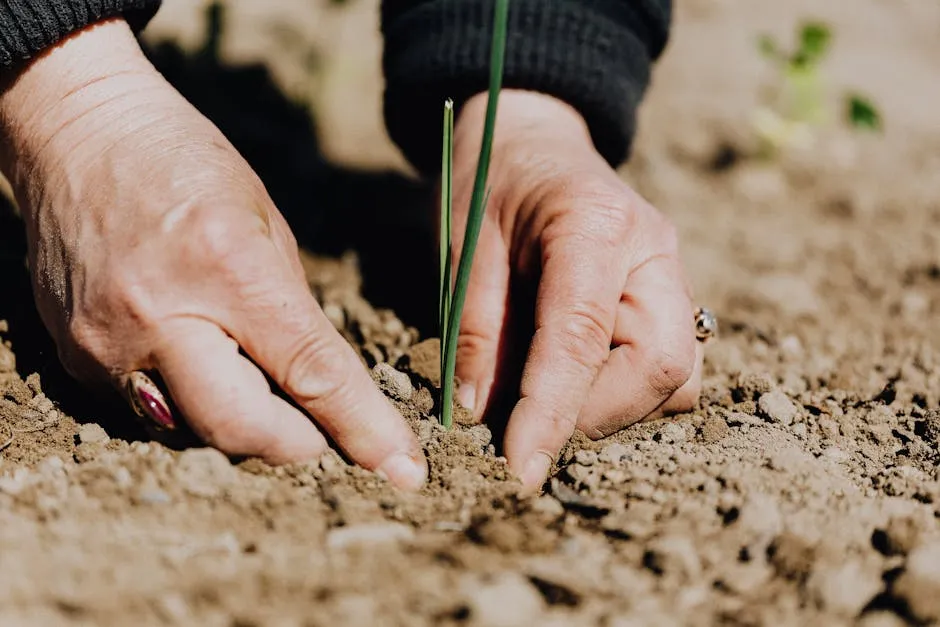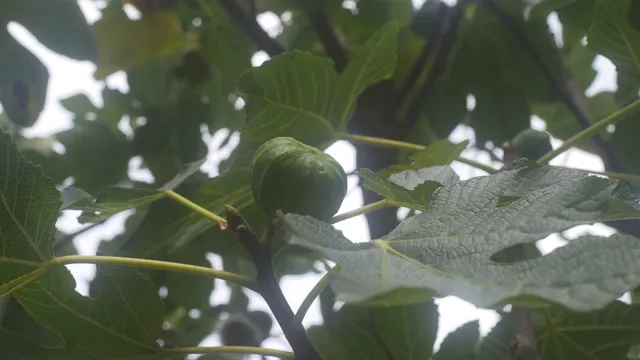

The Ultimate Guide to Money Plants: Care, Benefits, and More!
Origin and Characteristics
The Money Plant, scientifically known as Pothos or Epipremnum aureum, hails from the lush landscapes of the Solomon Islands. This tropical beauty thrives in warm, humid environments, making it a natural choice for indoor gardening. Its heart-shaped, glossy leaves are a sight to behold. They can flaunt a rich green hue or sport variegations of white, yellow, or pale green. These charming leaves not only please the eye but also have a knack for transforming any dull corner into a lively space. When growing in the wild, this plant can stretch up to an impressive 40 feet! However, indoors, it typically remains modest in size, making it a perfect fit for hanging baskets or as a climbing companion when provided with support. The growth habit of the Money Plant is fascinating. It can trail gracefully from shelves or climb up trellises, adapting beautifully to its surroundings. This versatility means you can let your creativity shine while incorporating it into your décor. Plus, its ability to thrive in a range of lighting conditions—everything from low light to bright indirect sunlight—makes it a low-stress addition to your plant family. So, whether you’re a seasoned plant lover or just starting your green journey, the Money Plant brings both beauty and adaptability to your home. It’s not just a plant; it’s a vibrant testament to nature’s simplicity and charm! And to ensure your plant thrives, consider investing in a high-quality indoor plant pot with drainage to keep its roots happy!
Historical Background
The Money Plant, also known as Pothos or Epipremnum aureum, originates from the enchanting Solomon Islands. This tropical paradise provides the perfect conditions for the plant’s vibrant growth. Picture lush greenery, warm temperatures, and humidity—ideal for a plant that thrives in such environments! The Money Plant has some special traits that make it stand out. Its heart-shaped leaves are not only pretty but also symbolize love and prosperity. These glossy green leaves can showcase stunning variegations of white, yellow, or pale green. They turn heads and lighten up any room! In the wild, this plant can reach astonishing lengths of up to 40 feet. However, indoors, it tends to keep a more manageable size, making it perfect for various settings. Whether draping over a shelf or climbing a trellis, its growth patterns adapt beautifully to its surroundings.Physical Features
The aesthetic value of the Money Plant is hard to miss. Its leaves come in vibrant shades, creating a lively atmosphere wherever they go. The variegation adds an extra layer of charm, providing a visual feast for the eyes. As for its growth habits? This plant can either trail elegantly or climb with purpose. It can cascade down from hanging baskets or ascend up a support structure. This versatility allows homeowners to showcase their creativity while incorporating the Money Plant into their décor. With the ability to adapt to different lighting conditions, from low light to bright indirect sunlight, the Money Plant continues to win hearts. It’s not just another plant; it’s a versatile companion that brings both beauty and a touch of nature into your home. To help with its growth, consider using a liquid fertilizer specifically designed for indoor plants!
Benefits of the Money Plant
Air Purification
Did you know that the Money Plant is a champion air purifier? Yes, it has a knack for clearing your indoor air of nasty toxins like formaldehyde and benzene. With the ability to absorb these harmful substances, it can contribute significantly to a healthier living space. Just imagine breathing in fresher air while your plant does all the hard work! Enhance this benefit further by using a humidity gauge for plants to monitor the moisture levels in your home!Aesthetic Appeal
The beauty of the Money Plant is undeniable. Its lush foliage instantly elevates the décor of any room. From modern minimalist to bohemian styles, this plant fits right in. You can display it in a variety of ways—hanging it from the ceiling, placing it on shelves, or even using decorative pots. The options are endless, and your creativity can shine through! To enhance your display, consider using a decorative hanging planter that complements your decor!
Low Maintenance Requirements
Busy lifestyle? No problem! The Money Plant is incredibly resilient and requires minimal care. It tolerates low light and doesn’t demand frequent watering. If you forget to water it occasionally, it will forgive you. This makes it a preferred choice for those who want greenery without the fuss. To keep your plant thriving, a plant care guide book can be a great resource!Cultural Significance
This plant carries a wealth of cultural symbolism. In many traditions, it is associated with prosperity and good fortune. It’s not uncommon to see it gifted during housewarmings or new business ventures. Adding a Money Plant to your home is like inviting a little luck and good vibes your way. To keep this positive energy flowing, consider using organic insecticidal soap to protect it from pests. In summary, the Money Plant is more than just a pretty face. Its air-purifying abilities, aesthetic contributions, low maintenance needs, and rich cultural significance make it a beloved choice for plant lovers everywhere. So why not bring one into your home today?
Care and Maintenance
Light Requirements
Money Plants love to soak up light, but not too much. Ideally, they thrive in bright, indirect sunlight. Picture this: a cozy corner near a window, where the sun shines softly but doesn’t glare. That’s the sweet spot! In low-light conditions, your Money Plant will still survive. However, it might become a bit leggy, reaching out for more light like a child in a candy store. Too much direct sunlight, though? That’s a no-go. Scorched leaves are the unhappy result, leaving your plant looking more like a crispy chip than a vibrant green beauty. To help regulate the light, consider using a LED grow light for indoor plants!
Watering Guidelines
When it comes to watering your Money Plant, a little patience goes a long way. Aim to water when the top inch of the soil feels dry. Stick your finger in the soil; if it’s dry, it’s time to hydrate! Overwatering can lead to root rot—yikes! So, ensure your pot has good drainage. If the leaves start to yellow or drop, you might be overzealously showering your plant. Conversely, if the leaves look crispy or shriveled, it may be crying out for more water. In winter, cut back on watering. Your plant will appreciate the lighter schedule during its dormant phase. For precise watering, a watering can with a long spout can make this task easier!Soil and Fertilization
For the Money Plant, well-draining soil is a must. A potting mix that retains some moisture but allows excess water to escape is ideal. Think of it like finding the perfect pair of shoes—not too tight and not too loose. As for fertilization, a balanced liquid fertilizer works wonders during the growing season. Every 4-6 weeks in spring and summer should keep your plant happy. In the fall and winter, ease up on the feeding, as your plant will slow down. Remember, a well-fed Money Plant is a happy Money Plant! For the best results, consider using a potting mix specifically for indoor plants!
Humidity and Temperature Preferences
Humidity is like a gentle hug for your Money Plant. While it prefers higher humidity, it can tolerate lower levels. If your indoor air feels dry, try misting the leaves occasionally. This simple act can help maintain moisture and keep your plant feeling fresh. Ideally, maintain a temperature between 60°F to 85°F. Avoid chilly drafts or placing it near heating vents. Your Money Plant enjoys warmth, so give it a cozy spot to thrive! For an easy way to monitor humidity, a soil moisture meter can be invaluable!
Propagation Techniques
Methods of Propagation
Want to multiply your Money Plant? It’s easier than you think! Propagation usually happens through cuttings. Snip a healthy stem with at least 4-5 leaves and a few nodes. Now you have options! For the water method, place your cutting in a jar of water, ensuring the nodes are submerged. Roots will sprout in a few weeks. If you prefer the soil method, plant the cutting in moist potting soil. Keep it damp until you see new growth. Voila! You’re on your way to creating a mini Money Plant jungle. To keep your cuttings organized, consider using plant labels for organization!
Timing and Care for New Plants
Timing is everything! The best time to propagate is during the growing season—spring or early summer. This gives your new plants the best chance to flourish. Once you’ve taken your cuttings, provide them with bright, indirect light and keep the soil moist but not soggy. Be patient! New roots will take time to establish, but soon enough, you’ll have thriving new plants to show off. They’ll be your green pride and joy, ready to brighten up your home or be gifted to a friend. Happy propagating! For those looking for a fun project, a plant propagation station can make the process even more enjoyable!
Common Issues and Solutions
Identifying Problems
Even the most resilient Money Plant can face challenges. Let’s identify some common issues you might encounter along the way. First up is overwatering. If your Money Plant’s leaves are turning yellow and feel mushy, it’s likely drowning. This could lead to root rot, a plant killer! Make sure the pot has drainage holes, and let the top inch of soil dry out before watering again. On the flip side, underwatering can also cause distress. If the leaves appear crispy or start to curl, your plant might be crying out for hydration. A good rule of thumb is to check the soil moisture regularly. If it’s dry an inch down, it’s time for a drink! To avoid these issues, consider investing in a good pair of gardening gloves to protect your hands while working with soil!
For more insights on managing pests effectively, you can refer to our guide on organic pest control methods for tomato plants.
Solutions and Preventative Care
Now that we know the problems, let’s explore some practical solutions. For overwatering, simply adjust your watering schedule. Allow the soil to dry out thoroughly before giving your Money Plant another sip. If you suspect root rot, it might be time to repot into fresh, dry soil. For those pesky underwatering symptoms, don’t fret! Just start a regular watering routine. Water until it drains from the bottom of the pot. Your plant will perk right back up before you know it! To keep your plant healthy and thriving, consider using a neem oil for pest control, which is a natural and effective solution!

Conclusion
In conclusion, the Money Plant is not just a beautiful addition to any indoor space; it’s a resilient companion that offers numerous benefits with minimal care. Whether you’re looking to purify your air, add a touch of greenery, or invite good fortune into your home, the Money Plant is the perfect choice. This plant shines in its ability to thrive on neglect, making it ideal for busy lifestyles. Plus, its air-purifying qualities improve indoor air quality, creating a healthier environment for you and your loved ones. For those who enjoy the therapeutic benefits of plants, consider an indoor herb garden kit to grow your own fresh herbs right at home!

FAQs
What is the best location for a Money Plant?
Finding the perfect spot for your Money Plant is crucial. Ideally, it loves bright, indirect sunlight. Place it near a window where it can soak up the light without getting scorched. If your space is a bit darker, don’t worry! Money Plants are adaptable and can thrive in low-light conditions too. Just remember, they may stretch toward the light, becoming a bit leggy. For offices, a desk near a window works wonders, adding a touch of nature to your workspace. If you’re feeling adventurous, try hanging it in a macramé planter. Watch it trail down gracefully, creating a lush vibe. Avoid placing it in direct sunlight, as that could lead to crispy leaves. Find that sweet spot, and your Money Plant will flourish!
How often should I water my Money Plant?
Watering your Money Plant is an art, not a science. Generally, you’ll want to check the soil moisture regularly. Wait until the top inch feels dry before watering again. During warmer months, aim to water every 1-2 weeks. In winter, cut back—your plant will appreciate the less frequent showers. Overwatering can lead to root rot, a plant’s worst nightmare! If you notice yellowing leaves, it may be a sign of too much water. Conversely, if the leaves are crispy and shriveled, it’s time to give your plant a drink. Trust your instincts, and your Money Plant will reward you with vibrant, healthy growth.
Can I keep a Money Plant outdoors?
Yes, you can! However, outdoor care requires a bit of finesse. Ensure your Money Plant is shielded from harsh sunlight and extreme weather. Ideally, place it in a spot with filtered light, like under a tree or on a shaded patio. The tropical plant thrives in warm temperatures, so keep it indoors if your area experiences chilly nights. If you notice the leaves wilting or browning, it might be receiving too much sun. During the rainy season, be careful not to let it sit in waterlogged soil. With the right conditions, you’ll have a thriving outdoor Money Plant that adds lush greenery to your garden!
Do Money Plants attract pests?
Ah, the age-old question! Unfortunately, Money Plants aren’t completely pest-proof. Common pests include spider mites and mealybugs, which can be quite pesky. Keep an eye out for tiny webs or cottony spots on the leaves. If you spot these intruders, act quickly! A gentle wipe with a damp cloth can remove many pests. For a more robust approach, consider using insecticidal soap. Prevention is key—regularly check your plant and ensure it’s healthy. A well-cared-for Money Plant is less likely to attract unwanted visitors. Stay vigilant, and your plant will thrive without the pesky pests!
Can I propagate my Money Plant in water?
Absolutely! Propagating your Money Plant in water is easy and rewarding. Start by snipping a healthy stem with at least 4-5 leaves and a couple of nodes. Place the cutting in a jar of water, ensuring the nodes are submerged. In about 2-4 weeks, you’ll notice roots developing. Change the water every few days to keep it fresh. Once the roots are a few inches long, you can transfer your new plant to soil. This method is a delightful way to multiply your green friends. Plus, who doesn’t love watching roots grow? It’s like a mini science project right in your home!
All images from Pexels



